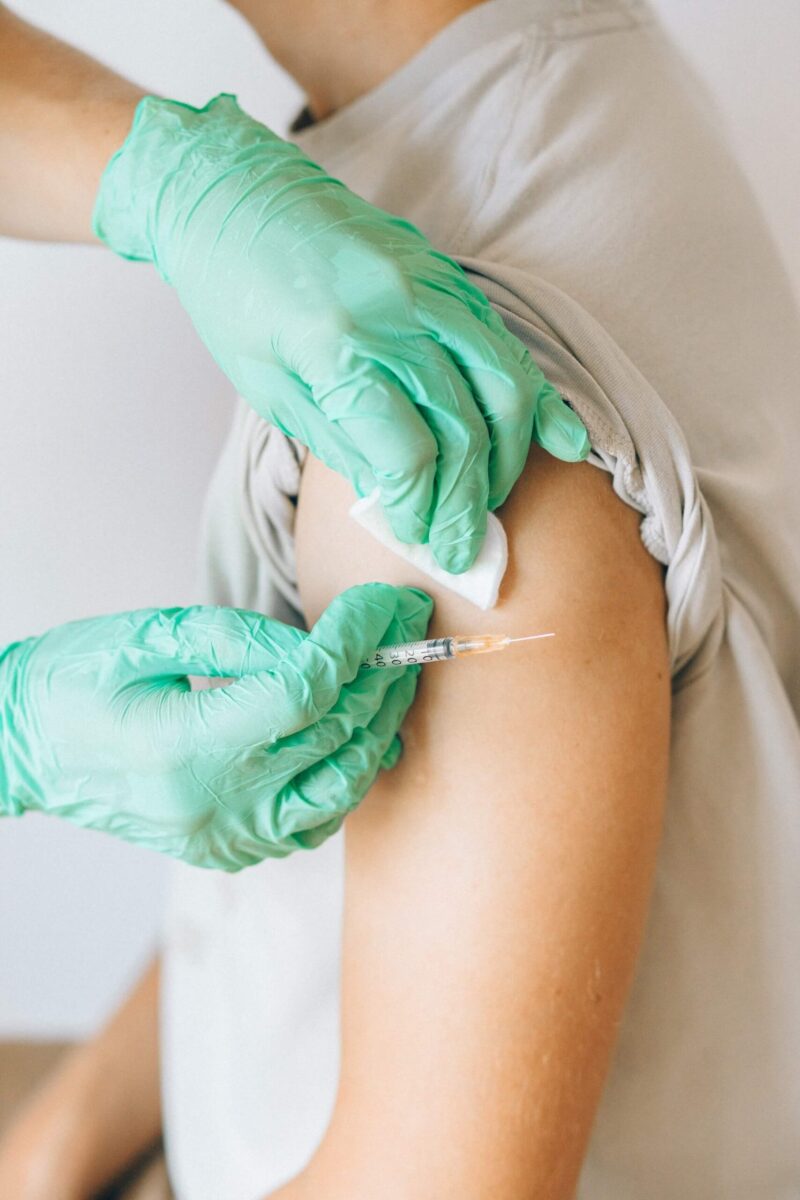Intramuscular Injection with UCLAHHC
Nearly everyone has received a shot before. Almost all vaccines are injected into a muscle, as well as a variety of medications. People with anaphylactic allergies are acutely aware of the uses of intramuscular injection. Many people have given themselves a lifesaving shot with an EpiPen in times of crisis.
Injections are used a lot by home health providers as well. Some kinds of medicine work best when injected into a muscle, rather than into veins or just under the skin. Other kinds of medicine should not be swallowed, due to adverse effects when they’re digested. Some patients, due to their condition, struggle to swallow pills as well. In those circumstances, delivering medicine via needle may be the way to go.
Our staff at UCLAHHC have given thousands of shots to patients, and we know how to do so with minimal discomfort. Additionally, we can teach some patients how to self-administer injections, giving themselves more independence and lessening the need for multiple health care worker visits. With our expert advice, giving yourself a shot doesn’t have to be painful or difficult or frightening.
Why Do We Use IM Injections?
Anyone who has received a vaccination can attest to the disagreeableness of the experience. Nobody likes getting a shot. Why not just make a pill?
Swallowing medicine might be the easiest way to take medicine, but there are several reasons why it’s not always possible.
- The digestive system destroys some drugs, rendering them useless when swallowed.
- Other drugs afflict the patient with nausea when swallowed.
- When time is of the essence—as it is when an EpiPen is needed—medications are absorbed very quickly when injected into a muscle. (This is not always the case in patients suffering from shock or heart attacks.)
- And, of course, patients who struggle to swallow need to receive their medicine by other means.
What about other methods? Aside from intramuscular, there are two other commonly used methods: intravenous and subcutaneous.
We sometimes provide IV therapy to patients in their homes, but it is not suitable for everyone. Some medications cause extreme discomfort when injected into a vein, but are less painful when delivered to a muscle. And some conditions make it difficult to find a vein in the first place. And finally, we try to avoid full-scale intravenous therapy when possible: it’s best to avoid the catheter, tubing, and cumbersome medical apparatus if individual muscular injections are available to give the needed medications.
Subcutaneous medication delivery is familiar to those with diabetes, as insulin is delivered just under the skin. But this delivery method is suitable only for small amounts of medication that need to be absorbed slowly. If the patient needs a greater amount of medication, or needs it absorbed quickly, then IM injection is the way to go.
In the course of our work, we at UCLAHHC have given thousands of shots to many patients. It is an experience that nobody enjoys, but with compassion, gentleness, and reassurance, we minimize the discomfort that patients feel.
Where Are Injections Given?
When the time comes to give a shot, there are four sites to choose from: the arm, hip, thigh, or buttocks. They each have their pros and cons, but in all cases, the person giving the injection, whether a healthcare professional or the patient herself, must endeavor to avoid hitting any major nerves or blood vessels.
- The deltoid muscle of the arm is the site most often chosen for vaccines. The deltoid can absorb only a small amount of fluid (no more than 1 milliliter), which makes it suitable for vaccines. But it is less often used for the medications used in home health care, which are typically between 2 and 5 milliliters. Very thin patients might not be able to manage even 1 milliliter. The deltoid is also not recommended for self-injection, as it is difficult to reach and administer.
- The ventrogluteal muscle of the hip is favored by medical professionals due to its large size and lack of proximity to large nerves and blood vessels. Again, however, it is difficult to use in self-administration.
- The vasus lateralis of the thigh is the best site for self-administering medication. It is easiest to reach and visualize where the shot should go: the outer top section of the middle third of the thigh.
- The dorsogluteal muscle of the buttocks is no longer in common use due to a slight risk of damaging the sciatic nerve. When a large muscle is needed, the hip site is preferred. But if you can’t inject into the hip for any reason, then the buttocks is the next best option.
For patients who receive injections regularly, we recommend rotating sites. Injecting into the same spot over and over can irritate the muscle or cause the skin to develop scarring. And do not use a potential site that is injured or infected.
Self-Administering Injections
Some patients may require regular intramuscular injections. For example, patients with multiple sclerosis might alleviate the severity of their illness with injected interferon. Instead of relying on medical professionals, these patients can learn how to give themselves their medication. Family members, too, can learn to administer shots safely to their loved ones.
UCLAHHC helps patients care for themselves by teaching them how to prepare for an injection, dose themselves properly, and dispose of the used equipment. Learning to self-administer medications supports patient independence and limits the number of visits professional health care workers must make, but we understand that it can be frightening for patients to stick themselves with needles. Thankfully, our compassionate health care workers often step into the role of educators, helping patients learn to inject themselves with medicine. With our calm, expert instruction, many patients have taken their healthcare into their own hands, learning to confidently self-administer their medications. And as always, support is never far away with UCLAHHC’s 24/7 helpline.


